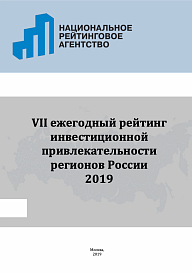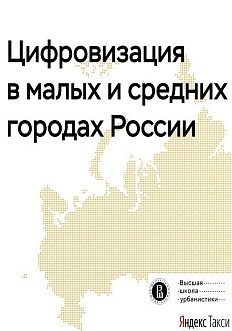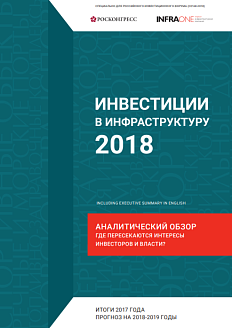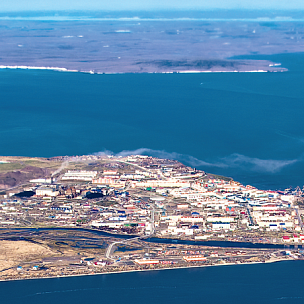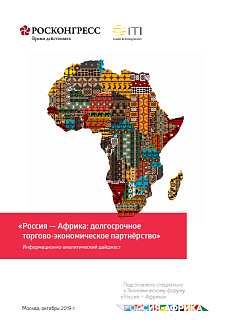The National Rating Agency (NRA) has presented its seventh annual rating of investment attractiveness of Russias regions. The rating includes all 85 regions of the Russian Federation. In 2019, 56 regions retained their positions in the rankings, while 20 regions received a higher and 9 regions a lower rating than a year earlier. The methodology of the rating implies that to keep its position, a region must show at least a minimal growth, while moving upwards requires a really outstanding performance. For some regions, the publication also provides detailed information on investment trends, changes in main economic indicators, and foreign investment flows.
The Roscongress Foundation presents the salient points of the publication accompanied by fragments of broadcasts of relevant panel discussions from the business programme of international events held by the Roscongress Foundation.
Investment growth in Russia has decelerated, with half of the regions showing a decrease in investment activity.
After the positive results of 2017 and 2018 when annual growth rate of investments in the Russian economy exceeded 4%, the first half of 2019 saw a rapid deceleration of investment activity. The volume of fixed capital investments in the first half of 2019 was only 0.6% greater than in the same period of 2018.
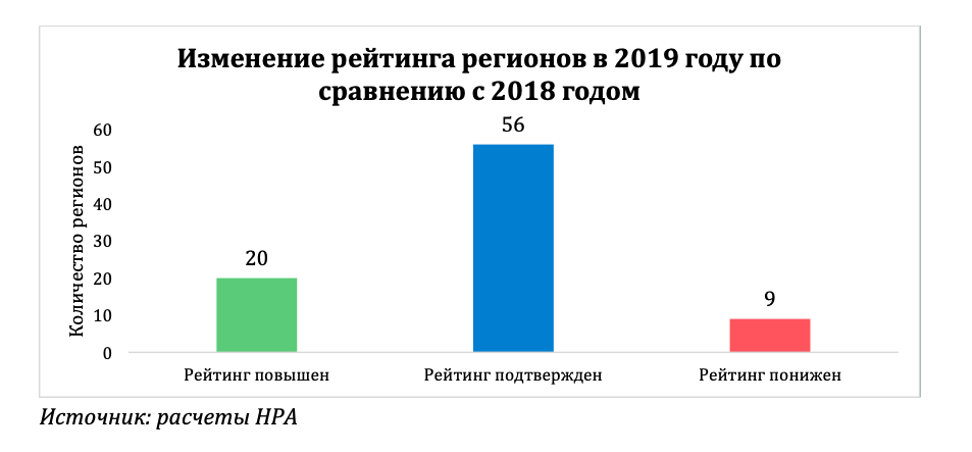
At regional level, the picture is even less optimistic, with investments growing in 43 regions and decreasing in 42 regions. Most regions reverted to negative growth after a rise in 2017 and 2018, but in a number of regions (such as Samara, Tomsk, and Volgograd Regions) the current decline continues the downward trend started during the 2014-2016 crisis.
For the first time, Moscow is the outright winner, while St. Petersburg moved one step downwards.
Moscow and St. Petersburg have always topped the investment attractiveness rankings. In all the six previous NRA ratings, these two regions were the only ones in the highest group (IC1). In 2019, however, Moscow alone remained in this group, with St. Petersburg sliding down to Group IC2. This situation reflects the outpacing development of Russias capital city compared to St. Petersburg. Specifically, in the first half of 2019 the volume of investments in fixed assets increased 19.5% in Moscow and dropped 20.9% in St. Petersburg compared to the same period of 2018 (in comparable prices).
The situation with foreign direct investments is broadly similar. According to Bank of Russia, over the first quarter of 2019 Moscow attracted 16% more FDI than a year earlier, while FDI in St. Petersburg decreased by 40%. A combination of favourable investment climate, dynamically developing infrastructure, and vast experience with large investment projects makes Moscow attractive to investors.
The city of Sevastopol made a breakthrough this year, moving three steps upwards in the rankings. This, however, was largely due to positive trends in its main economic indicators rather than private investors interest.
While in 2018 Sevastopol was in Group IC8 (moderate investment attractiveness), this year the city moved to Group IC5 (medium investment attractiveness).
Such an outstanding performance was facilitated by positive trends in the citys main economic indicators. Specifically, in the first half of 2019, growth in fixed capital investments exceeded 35%, while production volumes increased by nearly 10%. These achievements can be attributed to, above all, the financial support from the federal government and capital expenditures of state-owned companies. Risks related to the citys status and international sanctions remain a significant barrier to private investments, as evidenced by the fact that in early 2019 the growth in foreign direct investments was close to zero.
Video: https://roscongress.org/sessions/iif-2019-umnyy-gorod-ot-teorii-k-praktike/search/#01:09:36.127
Russias regions speak about their investment potential on the Internet but their online presence is far from satisfactory.
In 2019, NRA did a pilot assessment of the quality of regional investment web portals from the viewpoint of their content and opportunities for communication between regional administrations and potential investors (via feedback forms, social network accounts, hot lines, etc.).
The results show that in most regions investment portals work rather well as a platform for information disclosure. As for communication tools, these rarely function properly. Specifically, emails sent to contact addresses for investors were left without a response in the majority of cases. Kaluga Region received the maximum score for this parameter, while the web portal of the Chechen Republic showed the poorest result.
For more information about investment attractiveness of Russias regions and economic stability, please see the Regions of Russia, Investment climate, and Foreign direct investment special sections of the Roscongress information and analytical system.


